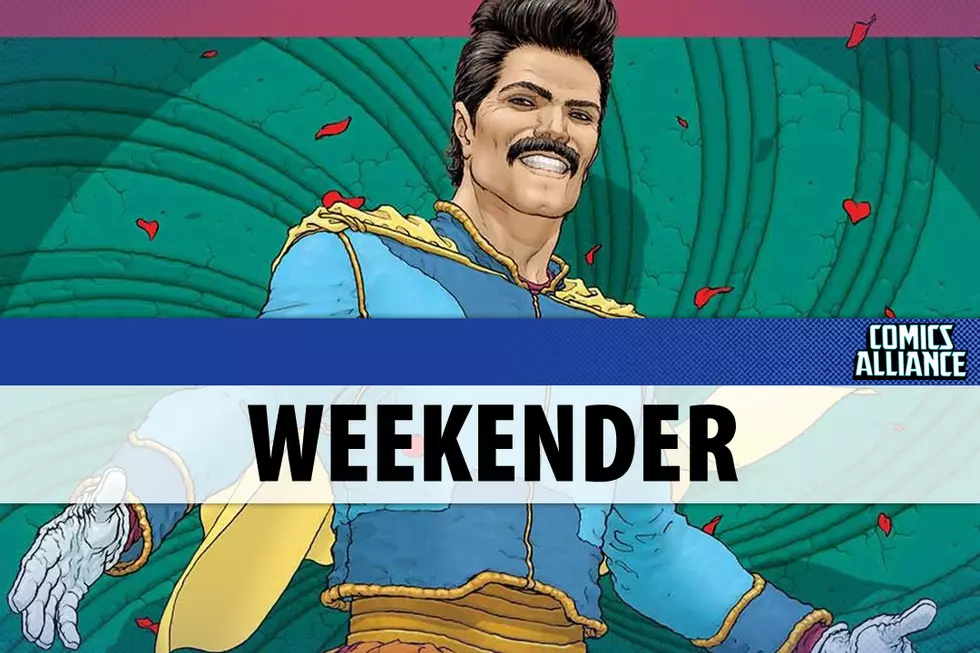
Surround Yourself With Things That Make You Happy: Michelle Czajkowski on ‘Ava’s Demon’
Michelle Czajkowski’s webcomic, Ava’s Demon, has become a beacon of independent success. Financially, it’s garnered over half a million dollars in Kickstarter backing over the course of two campaigns. Culturally, fans are popping up in highly-saturated body paint wherever cosplay is exhibited. Artistically, it’s become one of the most luminously lovely comics currently produced.
Yet its origins are simple: a story about a girl possessed by the ghost of an alien queen, created in the scant few hours Czajkowski had to herself between the end of her formal workday and sleep. ComicsAlliance sat with Czajkowski to learn more about her influences, her career transformation, and the future of webcomics as she sees it.
ComicsAlliance: Tell us about Ava’s Demon.
Michelle Czajkowski: The one sentence description I always give is that it’s about a girl possessed by the ghost of an alien queen. It’s kinda out there! Very sci-fi/fantasy.
CA: Where did the idea come from?
MC: I’ve had it for years. It’s basically a collage of stuff I’ve absorbed that I really like, like The Fifth Element and Alien and Kubrick films. I’m super into movies. It kinda stinks to say that I’m not really into comics — but I’m learning a lot about comics doing this. It balances out.
CA: Your work are really representative of a new wave of self-sustaining webcomics — you write it yourself, you draw it yourself, you merchandise and manage it yourself. How do you feel about where webcomics are right now?
MC: It all goes back to the economy. The economy is really bad. Minimum wage hasn’t increased in thirty years, right? So growing up, I know that for myself and others, art was never a career to seriously consider. And the reason that webcomics don’t always stand on their own is because many artists are part of bigger companies. But these days those companies are often over-saturated and falling apart, and I see a lot of my artistic friends breaking off from them and doing their own thing, creating their own original content that you can’t find from these companies.
There aren’t many options for people to create independent art — a lot of artists have other jobs in order to make their comic. But these days, with the internet, a lot of people can cut out the middleman of publishers and talent scouts and put their creations out there for free, for the public to decide democratically if they want to give it their money or not.
CA: We’re seeing a new professionalism enter webcomics — your Kickstarters, for example, were very successful and well managed. Can you give us a little insight into what your experience of crowdfunding has been like?
MC: It’s a lot of work. You need a lot of connections with people in business, as far as taxes go and whatnot. It’s a lot less just selling art — you have to figure out shipping, you have to figure out where you’re going to keep the stock. You have to find companies you never knew about before who will make you things like pins, stickers, and buttons. It’s a thing you’d never learn in school. I don’t think any schooling really prepares you for really creating a career for yourself — it prepares you for working for other entrepreneurs. Crowdfunding and the internet are going to start educating a lot of artists on how to make themselves into a business.
CA: There’s a lot of optimism out there about webcomics and crowdfunding, but there are also visions of total collapse. What do you think the future will look like?
MC: I don’t think there will be total collapse. I do think it will get saturated, and a lot of people will be more careful with how they spend their money. Right now, things like Kickstarter and Patreon are trendy, and it’s really easy for people to just throw money at them when they see them. But it will get saturated once people find out it’s easier to try to jumpstart a career than it is to find a job with these websites. I think it’ll be more competitive, but I don’t think it will crash and burn. I do think more websites will spring up to address the problems of the ones we have now. It’ll evolve.
CA: Tell us a little more about your path to creating Ava’s Demon. Did you always know you wanted to go into comics?
MC: Ever since I was little I’ve wanted to make comics. But like I said — to this generation, art really isn’t a career. I had to consider something else to make money and make my parents happy. I veered off from comics to animation, eventually got into 3D animation. I worked for Pixar and Dreamworks. And once I got there, I realized that it was very much a business and corporation, and I wanted to create. While I was working at Dreamworks, I went home at 6 every night and worked from 6 to 12 on this comic. I didn’t think it would actually make me a sustainable career, but it did, which was a nice surprise.
CA: What was that time in your life like, coming home from work to do more work?
MC: It was insanity. I had no life. I didn’t hang out with people. I sacrificed a lot — I sacrificed my health, because I had to work all weekend just to get one update out per week. I had to go to work and put the same amount of energy and effort there. In the end, though, it paid off.
CA: The line between fan and professional has always been blurred in the comics industry, but especially so with webcomics. Readers have a millions ways contact and access the creator, and their responses are immediate. What has that experience been like?
MC: It’s more gratifying. It’s more rewarding. You know the work you’re making is having an effect on people, whereas with companies, you are very much the company. And the only thing you really see is the public’s backlash. The artists don’t really have a say — if you don’t like what you’re doing, you can’t tell the CEO, “Hey, I think we should do something different.”
But if you’re an independent artist, you can make it as you see fit, you can see people’s reactions and get feedback. Historically, things have just worked better with smaller groups of artists working on creative content. For instance, Journey is probably done a lot better than games made by EA or Valve, and the team was 12 people. Sometimes the creativity just flows better with small groups of dedicated artists, and when it gets huge, it gets convoluted with so many different opinions and visions.
CA: What are the challenges of doing what you do? You have to be the artists, the PR liaison, the shipper, all that.
MC: That’s definitely the compromise. When you work for a company, you can go home at 6 and do what you want. As your own company, you do all the work and more, and usually don’t see a profit. But the reward is total control, and making something worthwhile to you.
CA: Ava’s Demon’s fanbase grows every day. Did you expect this kind of response?
MC: I definitely didn’t. I mostly started making it because it was something I’d wanted to make for a really long time, kind of like a childhood dream. And once I’d gotten a real job, I realized, okay, either I do it now or I never do it. There are so many excuses you can make to not do something. And it really blew up when I put it online — it grabbed the right people. It was really overwhelming, and still kind of is. With the last Kickstarter, I didn’t expect it to make that much money. It’s just incredible.
CA: Ava’s Demon has a particularly rich set of characters and a sprawling world. How did you develop these elements? What was that process like?
MC: It was a little difficult. You absorb a lot of things over time and you don’t really know how to fit it all together. What really helped me was interning at Pixar. They showed their process, and laid down the basic things a story needs to succeed. Your main character needs to want something, or nobody can connect with them. I wanted to make characters people could identify with, that wanted things and had troubles. The universe is just my personal tastes — things I’ve wanted to see in comics that I’ve never seen. It’s like surrounding yourself, creatively, with things that make you happy.
CA: Is there any kind of legacy you want to leave with Ava’s Demon? If there’s one thing you’d want to remembered for in comics, what would it be?
MC: I’d love to inspire kids like me to make comics. If my comic can help other people create beautiful content, and to not be afraid to make comics, and to just add more life and color to the world through art, I’d be happy. I just want to inspire others.
CA: If you could snap your fingers and change one thing about the industry, what would it be?
MC: I wish people would stop making art with the only goal being money. It kills the reason of art. I know it’s easy to say that — money is really important. But at the end of the day, if you’re only making something for money, it’s going to fail.
CA: Do you have advice for those who’d love to do what you do?
MC: Don’t make something if you’re not passionate about it. If you have to support yourself, get a job and put your all into a project. Don’t let it run your life or kill you. You’ve got to work hard to see anything flourish. And never stop drawing.
More From ComicsAlliance









